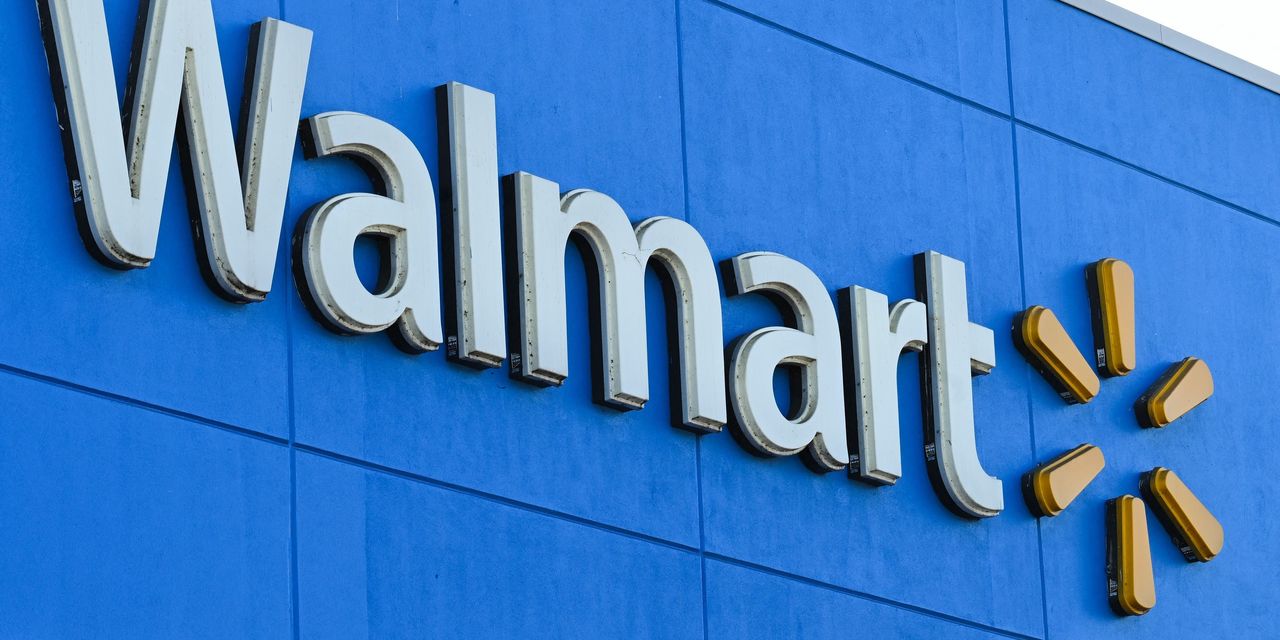Walmart Inc. sells billions of dollars’ worth of products in stores and online every quarter, and Thursday’s results showed no exception. But in the years ahead, the retailer is hoping to make a lot more money from advertisements promoting those products, via a segment at the company responsible for putting ads in front of shoppers browsing for purchases online and in its physical locations.
But as the chain’s ad business puts up double-digit growth and hefty profit margins, it could have a long way to go before it can deliver the businesses that buy those ads the same results that they’d get with digital-ad giants like Alphabet Inc.’s
GOOGL,
GOOG,
Google or Meta Platform’s
META,
Facebook.
Nikhil Raj, vice president of retail media business at ad-tech startup Moloco, who helped build out Walmart’s
WMT,
efforts in digital advertising in the prior decade, said the retail industry’s focus on digital advertising has become more aggressive, after the pandemic forced store chains to find ways to sell to an increasingly online audience. But as retailers gather more consumer data on how consumers browse and buy things, building out an infrastructure that can process that data in real time and quickly serve ads tailored to the preferences of millions of customers isn’t easy.
“You could argue that retailers really haven’t cracked the code on that one yet,” he said.
The challenge for Walmart, Raj said, would be in meeting the expectations of larger businesses that are used to the standard set by Google and Facebook.
“After a certain level, even Walmart’s power in the market is not enough to convince a Pepsi or Coke or General Mills or P&G to continue to invest, unless Walmart can provide the same kind of reporting, the same kind of targeting and the same kind of optimization that those companies are used to from ad players like Google and Facebook,” he said.
Walmart’s global advertising business grew by around 35% during its second quarter, the company said in its second-quarter earnings release on Thursday. In the U.S., executives reported a 36% sales jump for Walmart Connect, which helps put ads from brands selling things at Walmart in front of consumers, either within Walmart’s online ecosystem or on digital screens at Walmart’s physical stores.
Walmart Connect has nearly doubled in size over the past two years, executives said Thursday. Advertiser count was up 60%.
The gains come as retailers like Walmart and one of its chief rivals, Amazon.com Inc., look for ways to harness AI and reams of consumer data to more precisely target customers with ads and deals, amid ongoing consumer struggles with inflation. Walmart on Thursday said generative AI would “unlock value for shareholders.”
Amazon
AMZN,
meanwhile, said on its earnings call this month that its own advertising revenue jumped 22% to $10.7 billion in the last quarter. Brian Olsavsky, the online retailer’s chief financial officer, said its ad teams were using machine learning to “increase the relevancy of the ads we show to our customers.”
In February, Walmart said that its global advertising business closed out the last fiscal year with $2.7 billion to its name, up 30%. Walmart measures the financials of that business either in net sales or as a reduction to cost of sales, depending on the arrangement with the advertiser.
At a conference in March, Walmart Chief Financial Officer John Rainey said the growth of its ad business — as well as the fees it gets to process orders from outside merchants that sell products through Walmart online — would reshape the way the chain makes money in the years ahead.
“Today, the vast majority of our overall profits are attributable to in-store, brick-and-mortar, in the U.S.,” Rainey said. “If you fast forward five years, we are much less dependent upon that as an income stream.”
“There’s some of these other faster growing parts of our business,” he continued. “So, as we began to grow marketplaces more, have more sellers come to our platform that are selling third-party merchandise, we have a fee for that. If we fulfill that, we also have a fee for that as well. The more we’re doing that, the more advertisers want to spend advertising dollars on our platform. Certainly, that resonates with consumers right now.”
Rainey added that advertising margins typically land at around 70% to 80%. The rapid growth in that business, he said, would change the mix of its profit profile over time.
Raj said the cost to serve up an ad to shoppers on an e-commerce platform was essentially zero. After all, he said, customers were already on the website looking for things to buy. That can help pad the bottom line, as shipping and logistics costs weigh on a retailer’s e-commerce margins.
But he said the adjustments surrounding working with potential advertisers could take some getting used to.
“This company used to be my vendor,” he said. “Now, they’re my customer.”
Read the full article here



